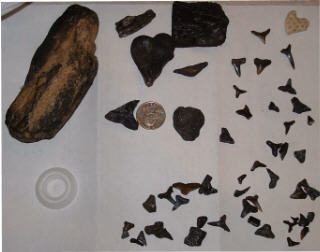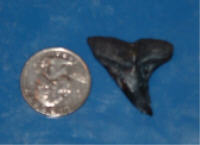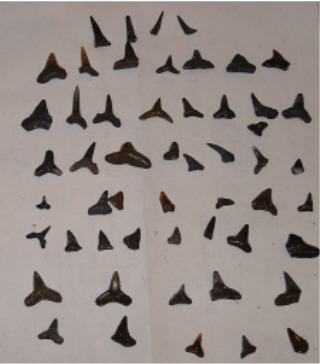A big, armored, toothed toad!. A toad the size of a bowling ball--now that's an amphibian for you! (Although really he's kind of small compared to the biggy amphibians of the past.)

A big, armored, toothed toad!. A toad the size of a bowling ball--now that's an amphibian for you! (Although really he's kind of small compared to the biggy amphibians of the past.)

More great science news thanks to FPJ. A giant eurypterid found in a quarry in Germany indicates one of the larger species every found. There have been specimens found in NY that have been estimated to be upwards of a meter. (I thought E. buffaloensis was upwards of 2 meters). But this guy (or gal) is estimated from claw size to have been upwards of 8 feet long. Very, very cool.
Later: Reading more carefully--as to the contention that it is the largest arthropod ever discovered, there is room for some doubt. Arthropleura, an arthropod similar to centipedes and millipedes has been estimated to be up to three meters in length by some scientists. Of course, so long as one is finding only single tergites or detached claws, there is reason to doubt the estimates. (Some very small arthropods have extremely "oversized" claws. I'm thinking here of species such as the coconut crab of the Andaman Islands. (The species pictured in the article are unfamiliar to me, they all seem to come from the south pacific.) But in these cases the claws are roughly half of the body mass--unusual, but not unheard of, and so it makes estimation from the claw a rather difficult matter.

I am amused--a clipping from a friend:
Answers to Silly Questions That Probably No One Asked
"In a remarkable feat, three amateur explorers have stumbled upon more than 100 fossilised eggs of dinosaurs in Madhya Pradesh," reports the Hindustan Times. Stories like this are always fun because they remind us of our boyhood enthusiasm for dinosaurs.
We also got a kick out of this quote from one of the explorers, Vishal Verma: "The eggs are from upper cretaceous era when the dinosaurs were yet to be extinct."
We wonder what question the reporter asked Verma to elicit this answer. So, were the dinosaurs already extinct when they laid these eggs? [FPJs comment]
Thanks FPJ.

Tiktaalik the Great, protoamphibian, source of consternation to those who think they understand evolutionary theory. At least it has an unpronounceable name so it can easily be dismissed. Be sure to check out the Inuktitut compatible site. I think we can recommend to the International Code of Zoological Nomenclature that all future discoveries and descriptions be made available in both English and Inuktitut.

I know you all would rather see pictures of Samuel, but pardon me for indulging my enthusiasm. It's definitely NOT great to be back, but then one can't spend every day in paradise as one would be tempted to do nothing.

The array of things collected including unidentified process of a femur or humerus, fish processes, shark teeth, alligator scutes and other more inscrutable objects.

One of the larger Shark's teeth I've had a chance to find, and probably one of the largest that is readily preserved in even the mild surf zone of the Gulf. (Great for kids--rays in the morning with minnows and little blue fish, the occasional crab, and for the adults, glorious sunsets and thunderstorms (about which more later).

Just the shark teeth with a quick attempt at orienting them all in the same way. Not knowledgeable enough to do true anterior/posterior and certainly don't know enough to tell you (yet) where in the mouth. But this array probably represents something like 20 species of shark, from Miocene to Plio-Pleistocene in age.
Hope that whets your appetite--or not, as the case may be. More about Venice tomorrow.

Simon Conway Morris is a scientist who is also a Christian and who has done a tremendoua amount of work on the Burgess Shale--a fauna explored by Stephen Jay Gould (largely with his skewed marxist contingency lens) in Wonderful Life In this book, Conway addresses Gould directly and seeks to refute much of Gould's contention regarding contingency. But I'm just quoting a passage that appealed to me as I was sitting at the car dealership.
from The Crucible of Creation
Simon Conway MorrisNobody knows the precise total of species that presently inhabit the Earth, nor how many once existed but are now extinct. There could quite easily be twenty million species alive today, and the number of extinct species must run into the hundreds of millions, if not the billions. Within this vast plenitude it is perhaps rather surprising that there is only one, unique species that can understand a single word of this book. This species, which is of course ourselves, is uniquely pirivileged: not only can we understand something of our origins, but we are the first animals ever to have looked at the stars and seen anything more than distant pin-pricks of light.
Perhaps later--this evening, tomorrow, or next week, I'll get into the material that is likely to ruffle a few feathers--or perhaps not. I'm often surprised at the reaction to things here at St. Blogs. And these surprises are nearly always gratifying.
